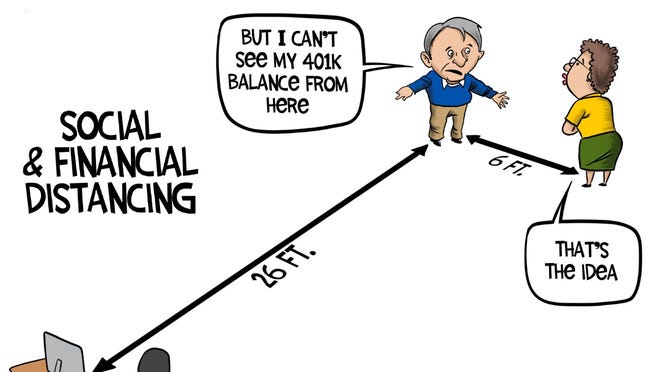How To Fix Healthcare In Us
In the United States, 327 million unique individuals fit into essentially two categories of patient: the relatively healthy and the relatively sick. The American health care system is designed for neither. Future solutions must be tailored to the needs of each.
Group A, the relatively healthy, includes the 60% of Americans who have no chronic or ongoing diseases. When seeking medical care, these patients want immediate access to a doctor who can quickly diagnose and treat their problems at a reasonable price. That's it: quick, convenient and affordable health care.
Patients wait too long, pay too much
Instead, new patients wait 29 days on average for a primary care appointment in a big city and three hours for "urgent care."
Both options cost a fortune. Recently, a woman with a head cold got an "out-of-network throat swab" priced at $28,400 while another received a $48,330 bill from her dermatologist — for a skin rash.
Health care is even more problematic for Group B, comprising more than 40% of Americans living with at least one chronic disease (such as diabetes, hypertension or mental illness). These patients take multiple medications, receive care from several doctors, and regularly find themselves lost in a maze of appointments, treatments and medical jargon.
In contrast to the straightforward, in-and-out needs of Group A, Group B requires more attention, assistance and expertise.
To satisfy both groups, American health care could learn a thing or two from the travel booking industry, where solutions for customers are segmented by needs and preferences.
Applied to health care, patients in Group A desire something like Expedia — a low-cost, tech-powered tool perfect for busy people who need help without the hassle.
Talking it out:Learning to discuss complicated issues ahead of the election
We want to hear from you:Be a part of the solution to finding solutions. Tell us here.
In today's health care system, useful technologies are scarce. If you experience a medical problem at night or over the weekend, you likely have two options: Go to the emergency room and wait for hours, or suffer through the night and call your doctor in the morning.
On the East Coast, however, one physician group introduced a third choice. When patients experience an injury or illness "after hours," they can connect with one of the group's ER-trained physicians through a secure video link. About 60% of the time, the problem is solved immediately at no added cost, thus preventing expensive emergency room visits while improving the patient's experience.
The same Expedia-like solutions work during weekdays, too. On the West Coast, patients with nonurgent medical questions don't have to miss a half-day of work for an in-person appointment. They can securely email their personal physician and, typically, get a same-day response.
In the future, solutions for Group A will rely more on technology and less on humans. Artificial intelligence software is already able to review preventive screening studies and detect abnormalities better than the average radiologist or dermatologist — both faster and at a fraction of the cost.
Taken together, the best solutions for Group A use effective, convenient and inexpensive technologies to make life easier.
Build relationships with chronically ill
Group B needs something different — the equivalent of an experienced travel agent.
Helping chronically ill patients necessitates an ongoing relationship with a physician who understands their needs, explains medicine in lay terms and helps manage the often-dizzying logistics.
One approach, called "leveraged primary care," adds low-cost support staff to the physician's office to ensure highly personalized, hands-on care. These medical assistants are trained to assemble patient data for doctors, communicate helpful info to patients and help coordinate all aspects of care delivery.
Taking the concept even further, some hospital systems have created the role of "community navigator." These health care workers provide patients with transportation to and from appointments. They also connect people with helpful community resources (like nutrition and educational programs) that can help keep them out of the hospital.
Finally, some larger medical groups are hiring pharmacists to work directly with patients. Using sophisticated patient-monitoring and IT applications, these clinical experts make sure people are taking their medications as prescribed while adjusting prescriptions as needed, all in real time.
While these "high-touch" health care solutions demand higher upfront costs, the long-term savings are significant. In fact, avoiding just one hospital admission or ER visit each year covers annual costs for the added outpatient personnel.
The American medical system is a relic from the past that fails to meet the needs of today's patients. Group A patients are frustrated and fed up with health care's many inconveniences. They need a solution that leans on modern technology. Group B patients are overwhelmed and afraid. They need humans they can trust to guide them through the confusion and complexity of health care.
When it comes to giving patients the best care possible, one size doesn't fit all. Americans deserve thoughtful solutions designed to meet the needs of both those who are relatively healthy and those who are relatively sick. Now is the time to do so.
Dr. Robert Pearl is a professor in the Stanford University School of Medicine and a faculty member of Stanford's School of Business. He is the author of "Mistreated: Why We Think We're Getting Good Health Care — and Why We're Usually Wrong" and a former CEO ofThe Permanente Medical Group/Kaiser Permanente,the nation's largest medical group.

How To Fix Healthcare In Us
Source: https://www.usatoday.com/story/opinion/2020/02/05/american-health-care-broken-heres-how-we-can-fix-patients-column/4621213002/
Posted by: singhsourn1974.blogspot.com

0 Response to "How To Fix Healthcare In Us"
Post a Comment